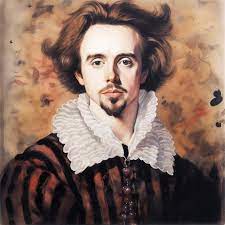Satyajit Ray Biography
- Satyajit Ray (1921-1992) was a towering figure in world cinema, a multifaceted artist who excelled as a filmmaker, screenwriter, documentary maker, music composer, author, illustrator, and publisher.
- Born in Calcutta (now Kolkata), India, Ray grew up immersed in a vibrant artistic milieu, deeply influenced by his illustrious family’s legacy in literature and illustration.
- His films garnered global acclaim for their poignant storytelling, humanist themes, and meticulous visual style, earning him international recognition as one of the greatest filmmakers of the 20th century.
Satyajit Ray Nationality & Age
- Nationality: Indian
- Age at Death: 70 years old
Satyajit Ray Education and Schooling
- Early Education: Primarily in Bengali at a government school, followed by Presidency College, Calcutta, where he honed his English language skills.
- Higher Education: Briefly studied economics at Presidency College before enrolling in Rabindranath Tagore’s Visva-Bharati University at Shantiniketan, where he explored art and aesthetics.
Satyajit Ray Relationship and Personal Life
- Wife: Bijoya Ray (née Banerjee)
- Children: Son, Sandip Ray, who carried on his father’s filmmaking legacy
Satyajit Ray Career Beginnings
- Initial Career: Worked as a commercial artist after completing his studies, honing his visual storytelling skills and developing a critical eye for detail.
- Filmmaking Inspiration: Became deeply engaged with cinema upon watching Jean Renoir’s “Bicycle Thieves” in 1948, sparking his desire to become a filmmaker.
- First Film: “Pather Panchali” (1955), a semi-autobiographical masterpiece based on Bibhutibhushan Bandyopadhyay’s novel, launched his career on a global trajectory.
Satyajit Ray Career and Contributions
- Filmmaking: Directed 37 films, encompassing features, documentaries, and children’s films, spanning diverse genres and themes.
- Notable Works: “The Apu Trilogy” (1955-1959), “The Music Room” (1958), “Charulata” (1964), “Nayak” (1966), “Goopy Gyne Bagha Byne” (1969), “Jana Aranya” (1970), “Shatranj Ke Khilari” (1977).
- Filmmaking Style: Renowned for his neorealist approach, emphasizing everyday life’s complexities and capturing human emotions with authenticity.
- Other Contributions: Founded “Chhelebela” magazine for children, wrote music for his films, penned numerous essays and short stories, illustrated books, and actively participated in cultural discourse.
Satyajit Ray Achievements and Awards
- International Acclaim: Cannes Film Festival awards for “Pather Panchali” (1955) and “Aparajito” (1956), Venice Film Festival Golden Lion for “Charulata” (1964).
- National Recognition: Dadasaheb Phalke Award (highest Indian film award), Bharat Ratna (India’s highest civilian award), National Film Awards for Best Feature Film and Best Director for multiple films.
- Global Recognition: Honorary Academy Award (Oscar) in 1992, Lifetime Achievement Award at the Berlin International Film Festival, Numerous international film festival awards.
Satyajit Ray Conclusion and Legacy
- Satyajit Ray’s artistic genius transcended borders and cultures, leaving an indelible mark on Indian and world cinema.
- His films continue to inspire filmmakers and audiences alike, captivating with their universal themes and timeless storytelling.
- Ray’s legacy goes beyond film, encompassing his contributions to literature, music, and illustration, cementing his place as a multifaceted artist and Renaissance man of the 20th century.



